The Eight Model Plays, consisting of five operas, two ballets and a symphony, were ideology-driven dramas overseen by Mao’s wife Jiang Qing, a former actress.
The plays defined art of the time and were held up as the epitome of Communist drama during the Cultural Revolution.
Their creation ushered in a subgenre of theater known as revolutionary opera and below we explore the story, revolutionary virtue and historical background of each play.
Taking Tiger Mountain by Strategy
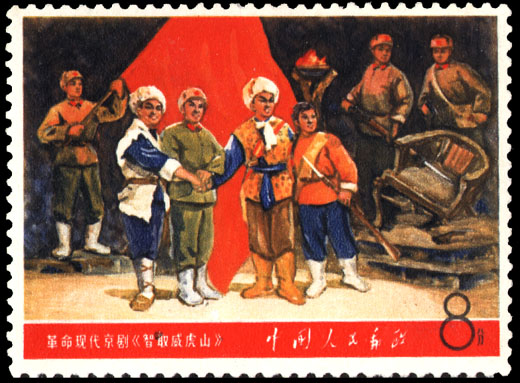
Story: A PLA detachment in Dongbei sets out to destroy a gang of bandits terrorizing the countryside. To circumvent Tiger Mountain fortress’ defenses, the platoon leader infiltrates the group by pretending to be a brigand himself, simultaneously marshaling the help of the local villagers to take down the stronghold.
Revolutionary Virtue: The revolutionary war is a war of the masses; it can be waged only by mobilizing the masses and relying on them.
Historical Background: Leading protagonist Yang Zirong genuinely was a military leader who quashed the outlaws of Tiger Mountain. In the very same month he achieved this feat, he was killed in a separate skirmish with another gang of marauders. The catchy title later inspired a Brian Eno album and was adopted as the name of William S. Burroughs’ only credited screenplay.
The Legend of the Red Lantern
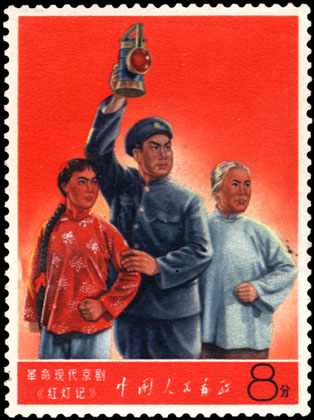
Story: A mortally wounded Communist operative entrusts a secret code to a railroad worker. The Japanese apprehend the worker, his mother and his daughter, but through a trick the latter manages to smuggle the code to the guerillas, though at great personal sacrifice.
Revolutionary Virtue: Theory of Permanent Revolution – there can be no compromise, no matter the losses.
Historical Background: Based on a true story, the real-life grandmother, granddaughter and father were actually not related. Fleeing the violent suppression of a workers’ strike, they lived communally together. This fact is referenced in one of the opera’s most famous lines, in which heroine Tiemi sings of her “countless uncles,” who are “even closer than blood relatives.”
Shajiabang

Story: When the Jiangsu market town of Shajiabang comes under Japanese attack, the 18-strong group of wounded PLA soldiers recuperating there rise to defend it and, with the help of the masses, succeed despite their injuries.
Revolutionary Virtue: Fight the enemy to the last drop of blood.
Historical Background: Another example of augmenting history to create great drama, this particular story was so well-liked that it became the basis for 31 opera versions in nine different styles. It was the Peking opera adaptation, however, that became part of the yangbanxi canon – as did the symphony created for Western orchestra, making Shajiabang the only tale to appear twice in the original list of the Eight Model Plays.
On the Docks
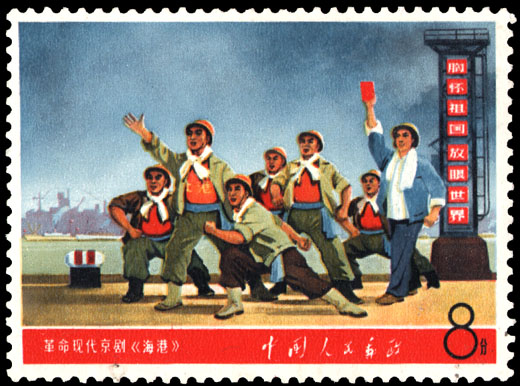
Story: Shanghai dockworkers are loading sacks of grain bound for Africa to aid in the anti-imperialist struggle while counterrevolutionary elements seek to sabotage China’s reputation abroad by conspiring to mix fiberglass in with the food.
Revolutionary Virtue: Internationalism and global solidarity. Vigilance for class enemies.
Historical Background: In the original plot, premiered in 1964, a stevedore accidentally mixed fiberglass in with the grain, which was bound for unknown lands; later, to further politicize the story, a class enemy was introduced who purposely added the toxic material to wheat, which was more specifically destined for the aid of newly independent African nations.
Raid on the White Tiger Regiment
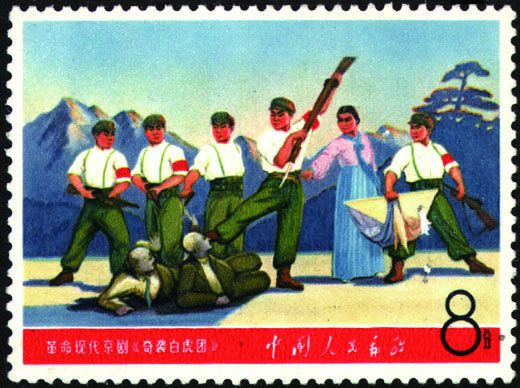
Story: It is 1953 in Korea and the treacherous Americans are pretending to pursue peace talks while secretly planning an offensive with the South Korean’s strongest battalion – the White Tiger Regiment – at the head. To pave the way for a counter-offensive, the Chinese People’s Volunteers must eliminate the enemy vanguard.
Revolutionary Virtue: Never cherish any illusions about the enemy.
Historical Background: Supporting the North Korean army, Chinese soldiers disguised themselves as South Korean troops and covertly breached the enemy lines to devastate the White Tiger Regiment, providing the real-life foundation for the opera. Beyond the fictional representation, the army was also able to capture the White Tiger’s pennant, which is still displayed in Beijing’s Military Museum.
The Red Detachment of Women
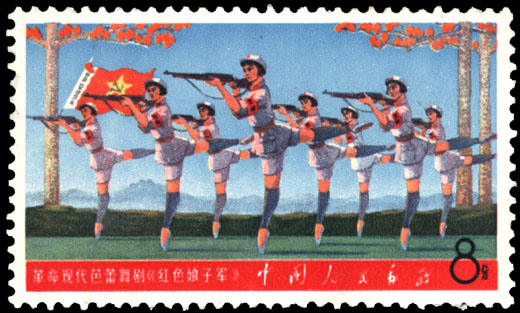
Story: Under the yoke of a cruel landlord, the daughter of a peasant on Hainan Island escapes from a dungeon and joins a Red Army detachment of female recruits. The division valiantly engages in a series of battles with her former tormentor and eventually emerges victorious, liberating the people.
Revolutionary Virtue: Women hold up half the sky.
Historical Background: During hostilities between the Nationalists and the Communists, there actually was an all-female division stationed on Hainan Island. The story of these women was originally made into a novel, before being adapted into a film, which in turn was the basis for the ballet. Premiered in 1964 by the National Ballet of China, it was performed for President Richard Nixon on his historic visit to China in 1972 and remains one of the most popular yangbanxi today.
The White-Haired Girl
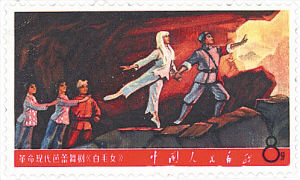
Story: A Hebei peasant girl flees the concubinage forced upon her by her evil landlord, going to live alone in a mountain cave. Her hair turns white, leading people to believe she is a spirit. Her fiancé finally returns from fighting the Japanese to liberate the village from their oppressors.
Revolutionary Virtue: Class struggle, patience and faith.
Historical Background: Local legends in Hebei and Shanxi surfaced in the late 30s claiming that a white-haired fairy lived in a cave in the area, rewarding the good and punishing the wicked. Though there have been film and opera adaptations of the myth, it is the ballet which has become a classic. The White-Haired Girl is prominently associated with the Shanghai Ballet, the forerunner of which first premiered the dance in 1964.
[Cover image via Slate]
// The Red Detachment of Women is being performed June 16-17, 8pm, RMB180-1,280. Guangzhou Opera House, 1 Zhujiang Xi Lu, Zhujiang Xincheng, Tianhe District, Guangzhou 广州市天河区珠江新城珠江西路1号 (020-3839 2888); June 11, 7.30pm, RMB30-580. Longgang Cultural Center, east side of Longcheng Square, Longgang District, Shenzhen 深圳市龙岗区龙城广场东侧龙岗文化中心 (0755-8955 8992)





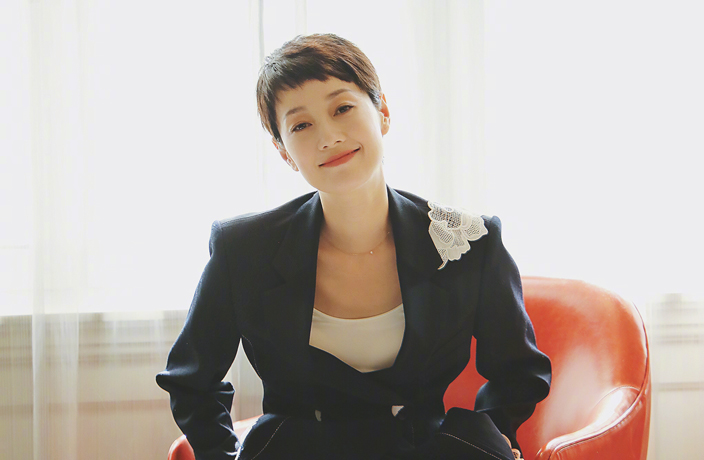
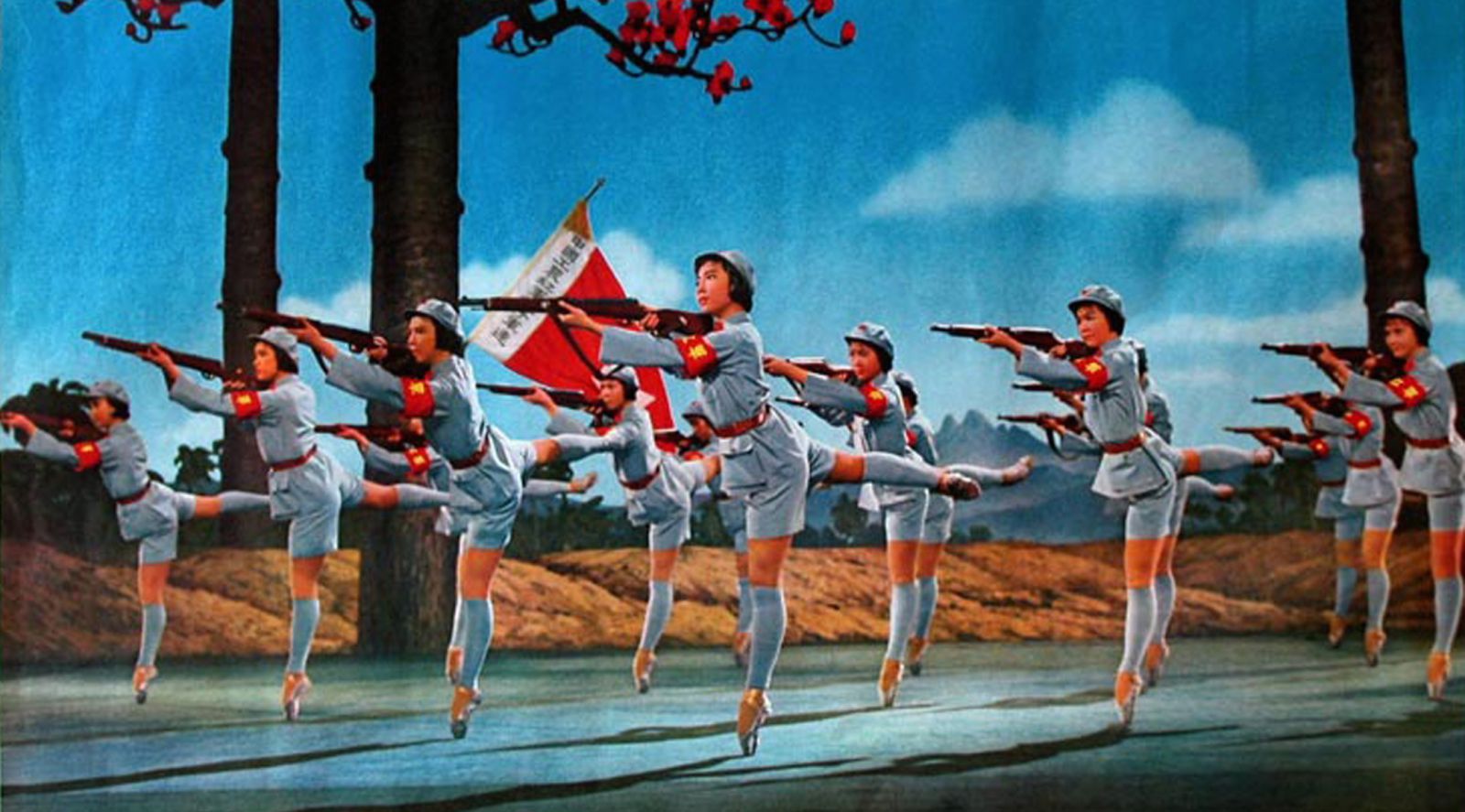
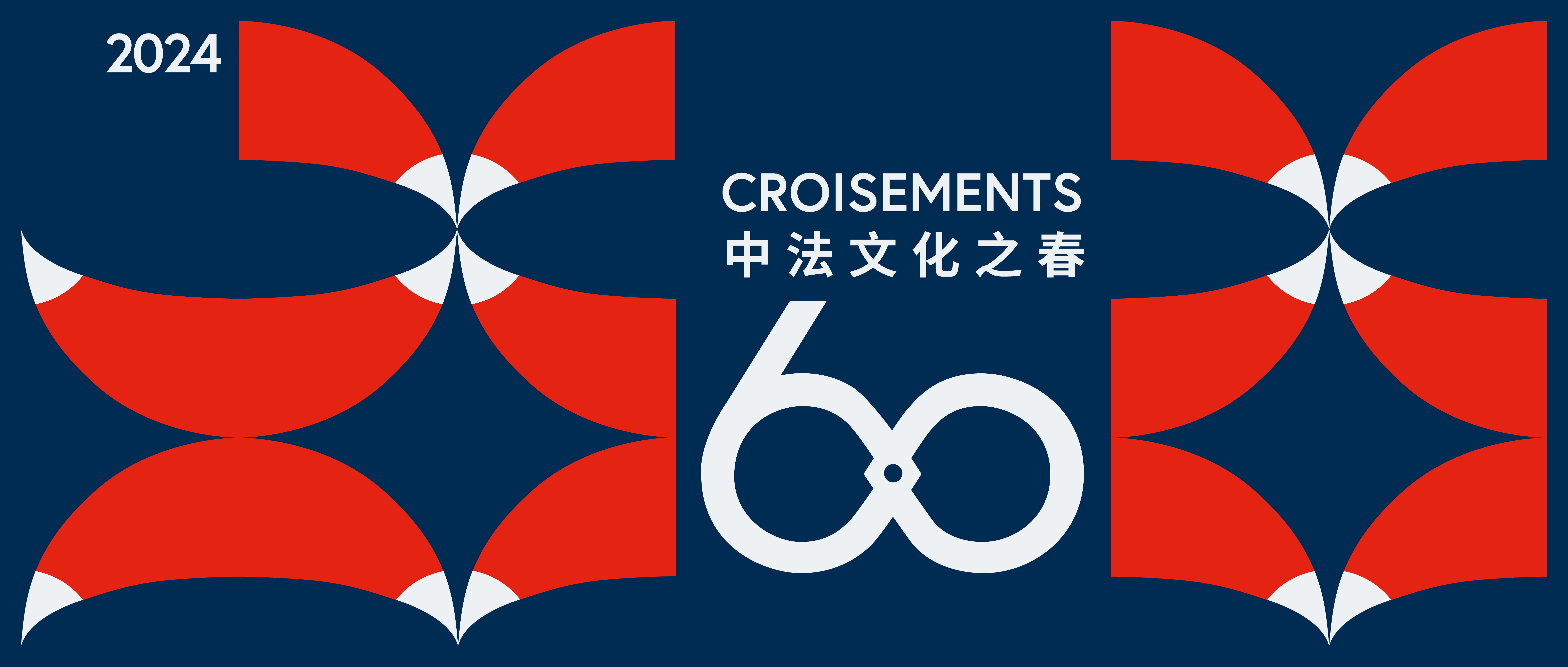














0 User Comments